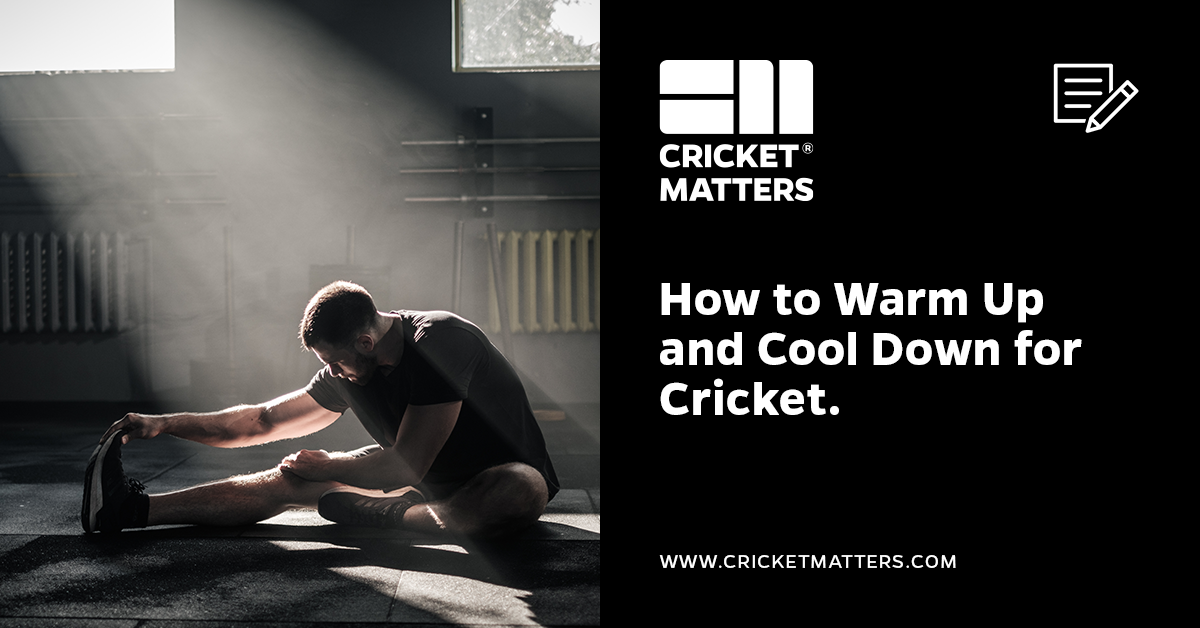
I hope you enjoy reading this blog post.
James Breese, Cricket Matters FounderIf you need my help with cricket coaching, strength and conditioning, injury rehab, or nutrition, click here.
This blog post is all about helping cricketers warm up and cool down based on my experience as a fitness professional.
It’s the same system that helped the Wales Over 50s Cricket Team return from the World Cup injury free.
Think about that for a moment.
A team of over 50s cricketers returning from an enduring Over 50s World Cup pain-free.
Something they had never managed to achieve before.
So, with that in mind, let’s dive right in.
Table of Contents
Having James on board with the Wales over 50s cricket squad has been hugely beneficial. Pre the World Cup in March James gave us warm up and warm down flexibility exercises to do. We continued to do these exercises religiously during the 9 game tournament. This helped immensely in none of the squad getting any muscular strains or injuries.
Introduction
Warming up and cooling down.
Certainly not the sexiest parts of a cricket match, right?
But you’d be surprised how many people decide they don’t need one or both of these critical bookends.
The good news is, in most cases, it’s simply because they want to save time.
After all, it’s only the match that counts, right?
Unfortunately for cricketers, that is not the case.
Cricket is hard on the body, and the players who skip the processes before and after a match, or training session may be doing more harm to their bodies than they realize.
So why are warming up and cooling down so important?
In short, a good warm up will:
- Vastly reduce the chance of acute injury during play.
- Decrease the chance of developing chronic pain in everyday life.
- Help maintain a healthy range of movement and mobility.
- Prepare the body and mind for the more difficult movements that lie ahead.
- Enhance your performance during the match.
- Leave you feeling amazing, loose, and ready to play.
A good cool down will:
- Reduce muscle soreness.
- Reduce muscle stiffness.
- Restore your parasympathetic response, decreasing stress levels helping you to recover faster for the next match.
As a cricketer, if you want to perform at your highest level while reducing the likelihood of injuries, the warm up and cool down are pivotal aspects of your preparation.
Sometimes, it’s the only difference that separates club cricketers from the pros.
Professionals never skip warm ups because they know the importance of them.
I’d like you to think about the professional cricketers you know of who’ve managed to prolong their athletic careers into their late 30s and 40s.
I think of Alec Stewart and James Anderson.
Both will testify to how essential warm ups and mobility care were to extending their athletic careers!
However, as the importance of warm ups and cool downs is documented more and more online, laypeople are adding more and more complexity to their routines to try and address certain issues.
It’s not uncommon to see warm up routines last the better part of an hour and cool downs even longer.
As with anything pertaining to the human body, you must understand that sometimes more is not always better; better is better.
What we’ve discovered in our experience is that there is a distinct difference between applying warm ups and cool downs as part of a workout plan and doing stand alone mobility and flexibility work.
Warm ups and cool downs don’t need to be long or complicated but they do need to be targeted to the type of work you’re doing that day.
Let’s dive into our complete system of warming up and cooling down so that you can start to apply these tactics immediately for long lasting impact.
The Two-Part Anatomy of a Warm-Up
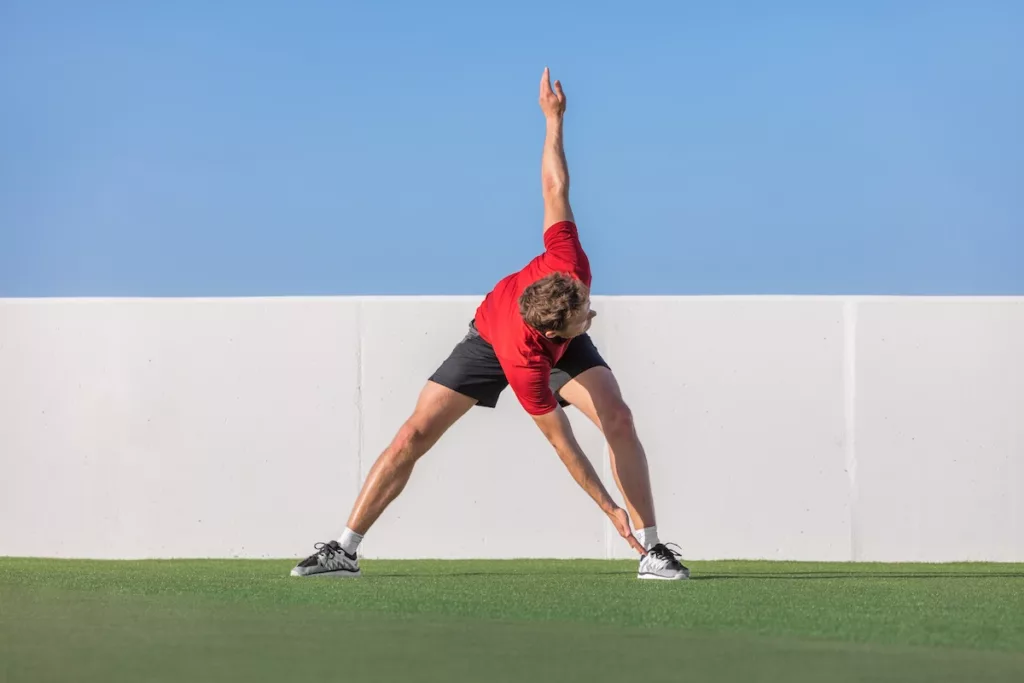
Warm ups are divided into two parts for us at Cricket Matters:
- Mobilization
- Activation
Both motivation and activation are vital to the task at hand and require careful planning.
When building an effective warm up for any workout routine, there are two key points we always address:
- It must be person-specific, tailored to the individual based on their own mobility short comings.
- It must be training/match-specific, based on what we’re asking the body to perform that day.
We all have our own individual needs.
Life happens and I’m sure we can all relate to suffering from various tightness or injuries along the way.
Point in case: My right shoulder, even though there’s no pain, it’s always a bit sticky because of the dislocations and breaks
I had in the past. Therefore, I know, no matter what the workout, my shoulders will benefit from a bit of tender loving care.
Warm ups should be mindful of past injuries because the absolute best predictor of injury is a prior history of injury.
In other words, if you’ve been injured before, you’re much more likely to get hurt than an athlete who’s trouble- free.
That’s why we need to ensure there are specific movements in the warm up tailored to your past issues.
Second to individual needs, we need to consider the training or match itself. What you are planning to do that day matters, a lot.
The number of times I see people warming up for workouts the same way, every day, regardless of workout type astounds me.
There’s no thought or logic behind what they are doing – it’s like they put the car in gear and the brain in neutral.
I’m afraid a few jumping jacks, side bends, and arm circles just won’t cut it.
Your warm up movements must match the type of work that you’re about to do. You need to mobilize the joints and activate the areas you’re going to be using.
For example, let’s say we’re looking at fast bowler.
Hips, ankles, and shoulders are a big priority here, maybe even some thoracic spine love too.
So how long should a warm up should be? It depends.
As a general rule of thumb, we look at 5, 10, and 15 minute blocks of movements depending on:
- The age of the cricketer (older = longer)
- Available time (it’s okay to be time crunched)
- Specific mobility restrictions (longer for people with issues)
With this in mind, let’s see how we structure the warm up.
Part One: Mobilization

There are three phases to the mobilization portion of the warm up:
- Diaphragmatic Breathing
- Self-Myofascial Release
- Dynamic Mobility
Diaphragmatic Breathing
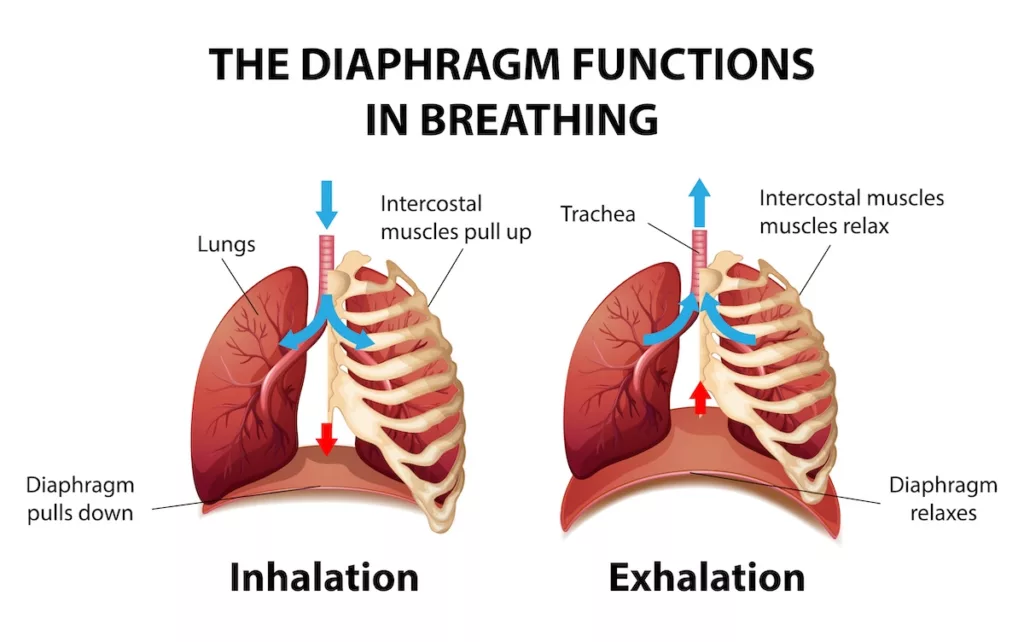
How we incorporate diaphragmatic breathing during warm ups has changed significantly over the years.
We’ve gone from doing a form of crocodile breathing, involving lying down on your belly being completely still, to now asking people to focus purely on nasal breathing.
Both techniques engage the diaphragm, but nasal breathing allows us to more efficiently consume oxygen (see Issue 2 of this publication!).
Most of the western world has a breathing problem and better diaphragmatic action can mean better thoracic spine movement, motor control, parasympathetic/sympathetic balance, and oxygen and carbon dioxide transfer.
It is a critical area to be able to address in your warm ups.
Self-Myofascial Release
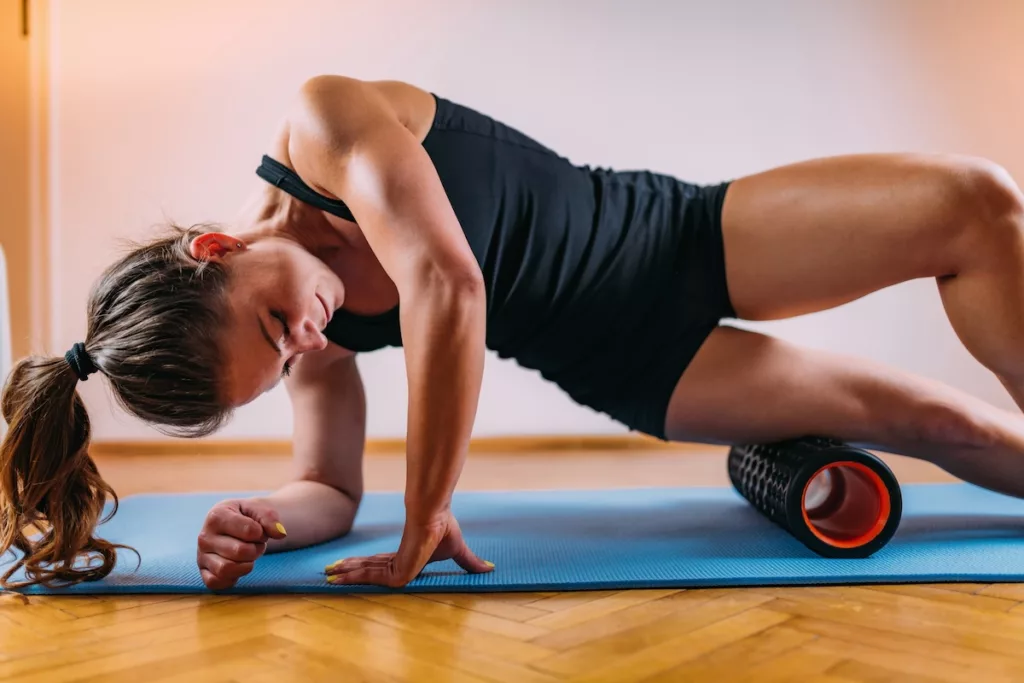
Self-myofascial release (SMR) techniques, such as foam rolling and other soft tissue modalities, can be extremely helpful during a warm up, especially if you are dealing with any chronic pain or tightness.
The research behind foam rolling suggests that using the foam roller before training can increase the range of movement, which could decrease chances of injury.
More research needs to be done to find conclusive evidence, but there are three prevailing theories as to why foam rolling works:
Theory 1: Both the mechanical pressure and subsequent heat generation causes the fluid at the joint to become runnier, which decreases the resistance that would otherwise be caused by any friction.
Think of the effect that oil has on rusty metal, it’s the same thing.
Theory 2: The direct pressure along the direction of muscular pull slightly re-aligns any collagen fibers from a more random to a more uniform direction, leading to increased lymphatic drainage and less resistance.
Theory 3: The direct pressure onto the muscle shows a typical stretch-response (e.g. when you stretch, the muscle contracts for a few seconds and then relaxes allowing you to stretch further), meaning that after 15-30 seconds, the muscle relaxes enough to increase the range of movement.
Irrespective of your school of thought, after years of experience we’re big fans of using targeted techniques on specific tissues prior to performing dynamic mobility work.
We find it prepares the body well for that type of motion and, in the longer term, it can improve the function of the body as a whole.
More importantly, it just leaves you feeling great!
Dynamic Mobility
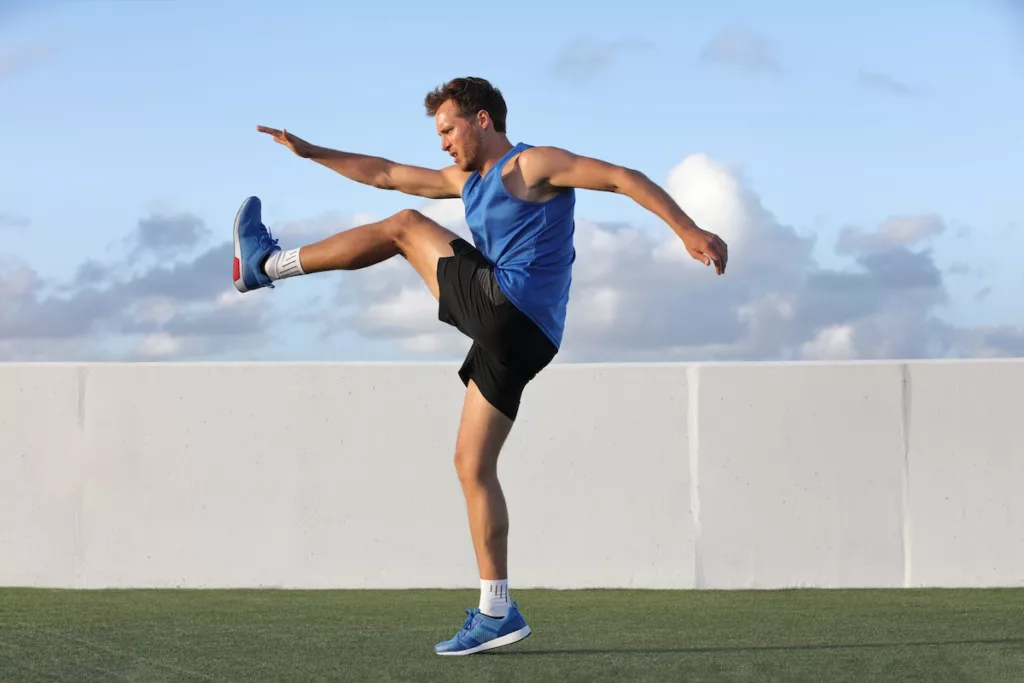
Dynamic mobility involves the movement of joints through their full range of motion in a slow and controlled manner.
There are no extended holds and the type of movement prescribed is similar to the activity that is about to be performed.
We use it to increase the temperature of the muscles and improve general stretch tolerance.
The literature on dynamic stretching indicates that it either improves performance by a small amount or has no effect.
Static stretching, on the other hand, has been clearly shown to worsen performance by small amounts.
This evidence justifies why we don’t include static stretching until the cool down. If you are a cricketer warming up, dynamic stretching rather than static stretching is key to a good warm up activity.
Part Two: Activation
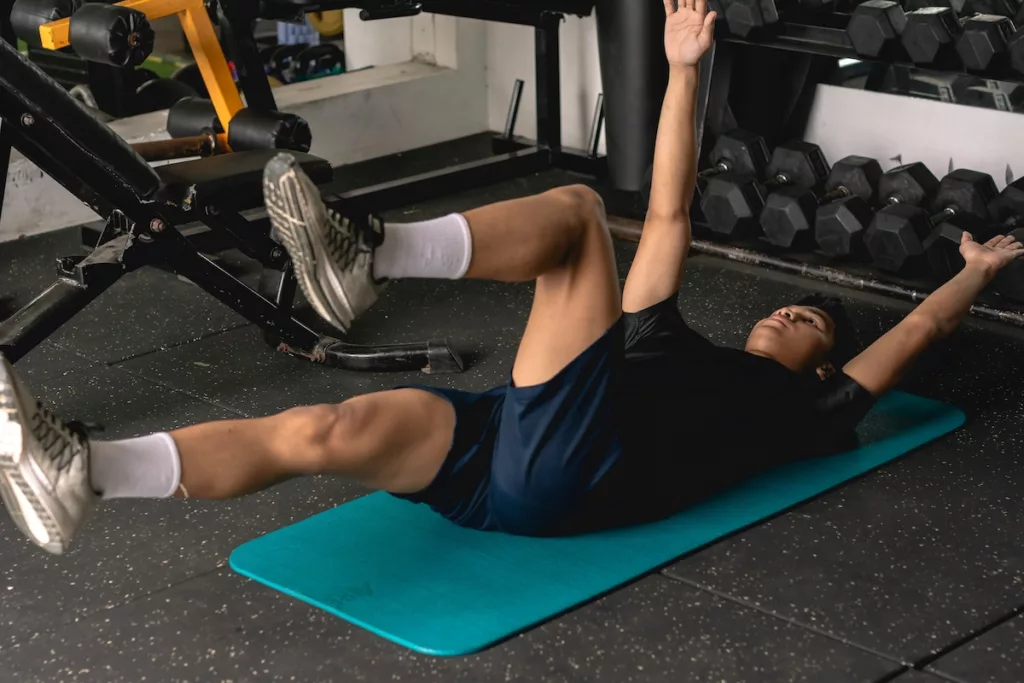
Activation is defined by purposeful movements that turn on both the nervous and muscular systems.
We stimulate neurological pathways that either directly or indirectly help with the planned movements of the main workout.
We are most concerned with activating the stabilizer muscles, which are necessary for efficient force production, but we also focus on whole body movements to prime other key muscle groups and promote full body blood flow.
The choice of activation exercises depends on:
- The individual needs of the cricketer: For example, someone with sleepy glutes may want to include some low threshold glute activation movements. Someone with an anteriorly tilted pelvis (weak abs) may benefit from ab activation exercises such as crawling or hanging knee/leg raises.
- The demands of the planned training session/match ahead: Before bowling fast, it might be beneficial to activate the hip abductors and the erector spinae, with ipsilateral bird dogs and face-the-wall squats. Before sprinting, it may be beneficial to activate the glutes to safeguard against hamstring tears and activate the lats for power production, so primal gait might be considered.
- The usual suspects for injury: In the case of a history of neck pain, it may be smart to activate the deep neck flexors with supine deep neck flexor activation. In the case of a history of lower back problems, activating the muscles of the abdominal cavity may be useful with six-point PF and TA activation and diaphragmatic breathing. For shoulder injuries, try crawling or overhead carrying.
The time frame for activation work lasts up to a maximum of five minutes and must cover all human movements (Locomotion, Push, Pull, Hinge, Squat, Rotate, Anti-Rotate).
The application of delivery is circuit-based as follows:
- Three exercises
- Two rounds
- Three to five reps (one each side if a Turkish Get Up)
- No rest between rounds.
When it comes to exercise selection, exercise one will be a specific human movement related to the training or match ahead, exercise two will be a core-based movement, and exercise three will involve some type of locomotion.
An activation circuit for a cricket match could be two rounds of the following:
- Cook Hip-Lift, five reps each side
- Dead-Bugs, five reps each side
- Bird Dogs, five reps each side
More emphasis is placed on the quality and intensity of muscular contractions for targeted tissues in this phase.
The better we can get the muscles firing, the better you will be able to move and function when it comes to the match itself.
The Cool Down
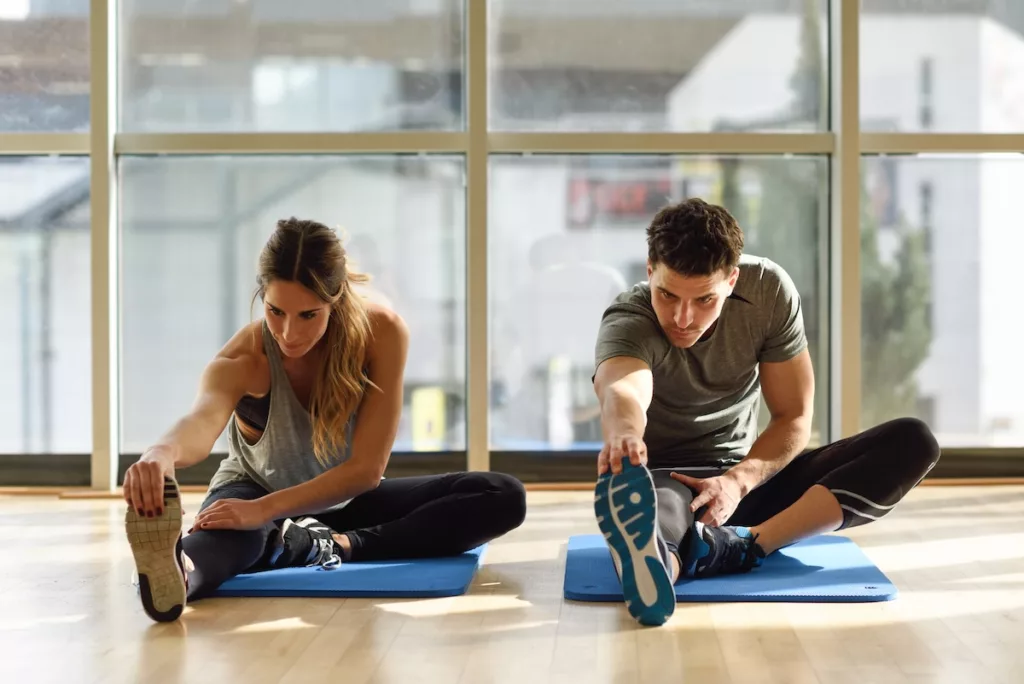
The number one rule we have when it comes to a good cool down for cricket is that it must mirror the warm up.
No exceptions.
In the warm up, we’re trying to prepare the body for exercise. In the cool down, we’re trying to restore it to its original state.
Instead of dynamic stretching, we use more static and passive stretching. Static and passive stretching are more appropriate during the cool down because they help muscles to relax, realign muscle fibers, and restore normal range of motion.
It will help your muscles recover faster after a match, leading to less pain and stiffness, and it’s also a great way to release stress and tension in your muscles, which can help you feel more relaxed and energized.
We work on the same 5, 10, and 15 minute block rules from the warm ups and always apply it to the needs of the individual everyday athlete.
This is how we structure the cool down:
- Start with 60 seconds of supine (on your back) diaphragmatic breathing to reset your parasympathetic nervous system
- Use only static stretches and hold those positions for two to three minutes to allow for real tissue change in each area
- Ensure the stretches mirror any foam rolling movements done in the warm up
Example Warm Up and Cool Down Session
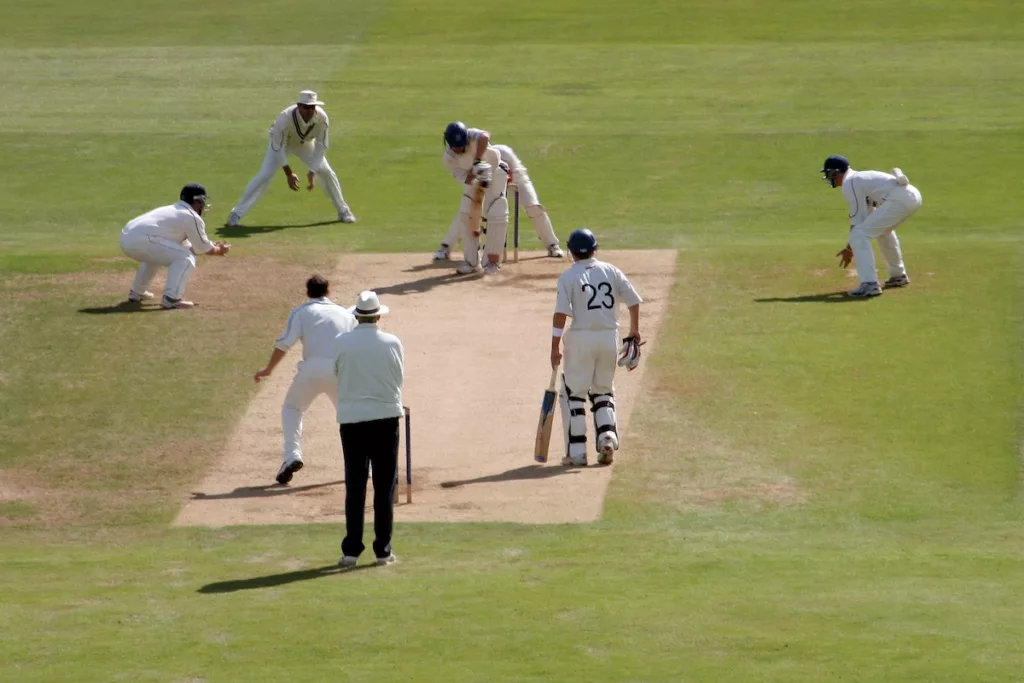
What would a warm up and cool down look like from start to finish look like if we were to implement this system?
Well, let me share with you an example of a pre-match plan I’ve used with teams before:
Warm-Up: Hips, T-Spine & Lower Back
**Nasal Breathe Throughout. Keep Mouth Closed.
- Foam Roll: Upper Back, Lower Back, Quads, Lats. 30 seconds per area.
- Psoas Smash: 30 seconds each side
- Cat & Cow: 1 minute
- Roll To V-Sit: 1 minute
- Lizard Lunge Hip Opener: 1 minute per side
- Dragon Pumps: 1 minute, alternating sides
- Rocking: 1 minute
Activation:
Two Rounds
- Banded Hip Bridge, 5 reps, 3 seconds pause at top
- Reverse Salamander, 5/5 reps
- Leopard Crawl, 30 seconds
Cool-Down: Hips, T-Spine & Lower Back
**Nasal Breathe Throughout. Keep Mouth Closed.
- Diaphragmatic Breathing: 1 minute (focus on expanding the rib cage sideways)
- Kneeling 90° Hip Stretch: 2 minutes both legs
- Bent Arm Prayer: 2 minutes
- Wide-Angle Seated Forward Bend: 2 minutes
- Lying Quad Stretch: 2 minutes
Final Thoughts: How to Warm Up and Cool Down for Cricketers
Warm ups and cool downs are some of the most neglected aspects of cricket but I hope you now understand how they can help you become a better cricketer and it will increase your playing career.
Training for longevity and health requires time spent doing them, and doing them well. Use our system to implement them immediately into your own match practice.
And remember: Make sure the warm up mirrors the cool down.
Focus on this part of your training for the next month or two and, I promise you, your life and cricketing performance will get so much better.
Further Reading
FAQs
Why is Warming Up Crucial for Cricketers?
Warming up prepares muscles and joints, enhances blood flow, and helps in mental readiness. This minimizes injury risks and boosts performance through activities that elevate heart rate and mimic cricket movements.
What Should a Proper Cool Down Entail for Cricketers?
Cool downs help the body to gradually return to its resting state. It typically involves low-intensity breathing and stretching exercises to relieve muscle tension and aid in recovery, crucial for maintaining flexibility and reducing post-exercise soreness.
How Should Cricketers Structure Their Warm-Up?
A cricketer’s warm-up should include general exercises like jogging to raise the heart rate, followed by dynamic stretching and sport-specific drills to activate muscles and joints used in cricket.
How Long Should a Cricket Warm-Up Last?
The duration of a cricket warm-up can vary, typically ranging between 5 to 15 minutes. The exact length depends on several factors like the athlete’s age, fitness level, and specific requirements of the day’s play. Younger or less experienced players might need a longer warm-up to prepare adequately, while seasoned athletes could require less time. Tailoring the warm-up to individual needs ensures optimal preparation for the game.
What’s the Importance of Tailoring Warm-Ups and Cool Downs?
Personalizing these routines to one’s physical needs and the day’s specific activities helps to maximize their effectiveness. This customization ensures that the body is optimally prepared for the game and recovers efficiently afterwards.

